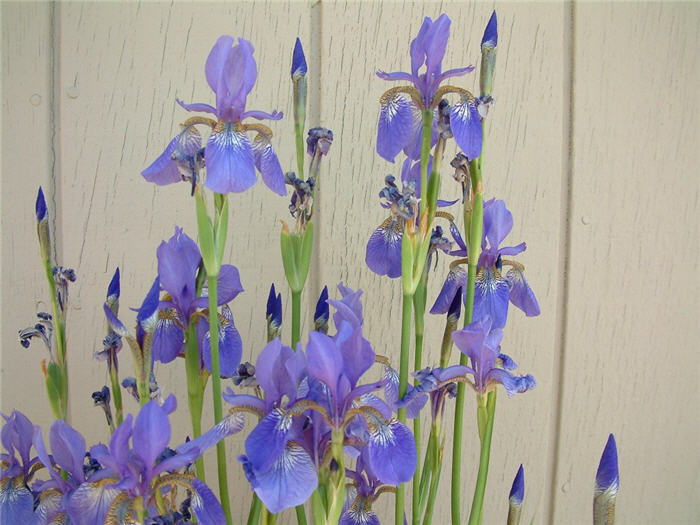| Botanical Name: Iris sibirica 'Ceasar's Brother' | |
| Common Name: Ceasar's Brother Siberian Iris |

-
Anatomy
-
Culture
-
Design
Plant Type
Perennial, Bulb
Height Range
1-3'
Flower Color
Blue
Flower Season
Spring
Leaf Color
Green
Bark Color
n/a
Fruit Color
Brown
Fruit Season
Winter, Fall
Sun
Full, Half
Water
High, Extra in Summer
Growth Rate
Slow
Soil Type
Sandy, Clay, Loam
Soil Condition
Average, Rich, Well-drained, Moist
Soil pH
Acid, Neutral
Adverse Factors
n/a
Design Styles
English Cottage, Formal, Japanese, Water Garden, Woodland
Accenting Features
Showy Flowers, Specimen
Seasonal Interest
Winter, Spring, Summer, Fall
Location Uses
Entry, Perennial Border, Shrub Border, Foundation, Patio, Raised Planter
Special Uses
Cut Flowers, Mass Planting, Naturalizing, Small Spaces
Attracts Wildlife
n/a
Information by: Stephanie Duer
Photographer:
Photographer:
-
Description
-
Notes
'Ceasar's Brother' is a siberian iris selection with deep blue flowers on stalks that rise to about 36 inches. Flowers bloom in late spring, and are followed by interesting seed pods. Foliage is narrow, erect, and and a rich green, turning orange to brown in the fall. Not for a low-water garden, but certainly worth including in perennial borders that receive weekly watering.
Grow in full sun to part shade in well drained soil. Though it is not particular about soil type, it will grow best in a fertile, loamy soil. The flowers are lovely cut, but the seed heads are quite ornamental and its worth letting some go to seed. The foliage is very persistent into the winter months and provides a pleasant winter presence; cut back in late winter to early spring as new growth emerges.